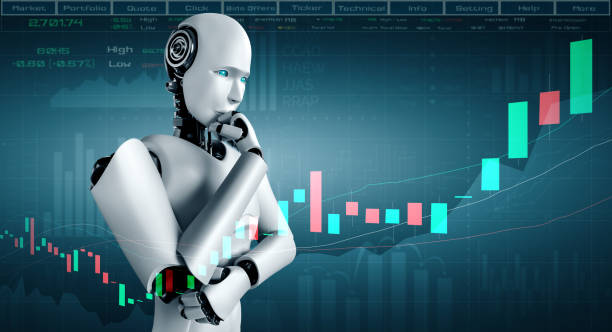After dominating the Ethereum network, crypto trading bots are roaming everywhere and causing a lot of havoc on the younger blockchains, including Solana. The troubles caused by these trading bots signal that decentralized finance (DeFi) has a long way to go before its underlying infrastructure meets the needs of professionals.
While deploying funny-sounding strategies like “sandwich trading,” these bots have managed to conquer most of the market for Ethereum-based digital tokens, scooping up hundreds of millions or billions of dollars in trading profits over the years of their trading operations.
As time goes by, these bots have made enemies by front-running others’ transactions, something that blockchain-powered trading normally allows. There has been a benefit to the wider industry: by operating like the old-school arbitrageurs, the bots have made the Ethereum ecosystem more efficient, minimizing price dislocations by strategically buying low and selling high, repeatedly.
These bots have been highly successful and have made it harder for the bot-deploying traders to make profits on the original environment in Ethereum. They are now searching everywhere, causing havoc on budding blockchains in the process. They have now overrun market networks that could not handle the rapid pace of their trading.
As the crypto prices crumbled in recent weeks, the liquidation bots bogged down Solana. Solana is a blockchain that is highly favored by most of the finance pros. The bots bogged the platform when they overloaded it by sending over 2 million transactions each second. Last September, Solana went offline for 17 hours due to intensive bot activity.
Solana is not alone in experiencing an influx of computerized bots and traders. Avalanche, Polygon, and Binance Smart Chain are also getting overwhelmed. Flashbots that make the software that the bot traders use, states that over 25% of MEV now happens on other blockchains other than Ethereum
What seems to be currently attracting these automated traders is a sign that decentralized finance is thriving and expanding beyond this realm, which brings the bots with them. Automated traders are believed to have helped make Ethereum the second-biggest crypto. But the problems that these trading bots have caused show that the sector has a long way to go before their underpinning infrastructure meets all the needs of professionals.
Related:Bitcoin Price Manipulated by Cryptocurrency Trading Bots: WSJ
A portfolio manager at BlockTower, Avi Felman, stated:
“Outages on a decentralized blockchain are always concerning. Solana’s recent troubles should remind everyone that new consensus mechanisms are inherently untested, and are very much still as experimental as they are exciting.”
A lot of what these trading bots do in cryptocurrency is making profits off something the crypto operators call MEV. Initially, MEV stood for “miner extractable value” but the term changed into “maximum extractable value” or ‘maximal extractable value.’
Some of these strategies have drawbacks in the conventional markets, like arbitrage. If you take sandwich trading, for instance, where a trading bot spots that another trader has placed a trade on a decentralized exchange that may move prices. Due to the way blockchains operate, the sandwich-seeking bot can buy the asset first, which means that the original person gets a worse price and then the bot sells the asset after the prices move.
Thousands of the software programs, with some of them run by crypto developers out of their bedrooms, have been a blessing and a curse for Ethereum. The bots have pushed up transaction costs while poaching trades, but also deepened liquidity and supported many lending and borrowing apps.
Ethereum’s network can now majorly handle all that volume. However, the decentralized finance movement is rapidly spreading to other blockchains, but they are not holding up nearly as well. Flashbots’ Robert Miller tweeted last month:
“A blockchain isn’t battle-tested until there are millions of dollars at stake and it’s been hammered by MEV bots seeking any edge they can get.”
Bots invaded the Solana network in late January. Anatoly Yakovenko, Solana co-founder, tweeted on January 26:
“Liquidator bots started spamming the network.”
The spamming exposed a software bug in Solana, which slowed down the network. In early last month, a trading bot on blockchain Polygon PoS executed almost 1.5 million transactions to mint pickaxes in the crop-planting game Sunflower Farmers.
Bot activity, in the end, shut down the game and pushed transaction fees on Polygon to nearly 10 cents from a fraction of a cent. The co-founder of Polygon, Sandeep Nailwal, said in an interview:
“When you have bot activity, the average player suffers.”
The trading bots proliferation is believed to be a sign that the nascent blockchains have arrived. As the platforms attract more DeFi applications, ranging from lending services to exchanges, which creates more money-making opportunities for the trading bots.
DeFi apps on Polygon now have nearly $3.4 billion in total funds locked, up from $130 million a year ago, as highlighted by DappRadar. Total funds locked is a crypto-sector measure that analyzes the amounts of money that are invested in a given blockchain network.
Binance Smart Chain is up to over $9.6 billion from less than $400 million. However, these figures are dwarfed by the $91 billion locked in Ethereum. However, these blockchains are growing fast. The principal blockchain engineer at Blockdaemon that manages blockchain infrastructure, Jonas Pfannschmidt, said:
“What I am seeing is whenever there’s more DeFi activity in a specific blockchain, it automatically means there are more bot opportunities and more people will try to exploit those opportunities.”
There are other reasons for the trading bots’ migration: in 2021, more bots piled into Ethereum, making operations on the network highly expensive and competitive. Hence, some of them a looking for greener pastures as explained by Alex Obadia of Flashbots in a January 13 YouTube presentation that was watched in real-time by many developers.
Some of the long-time trading bot operators are just hedging their bets, mainly as Ethereum is expected to undergo a significant technical overhaul in 2022 known as Ethereum 2.0. That is the main foundation of Ethereum and it is being redesigned. Some of the trading bot operators worry that the upgrade may disrupt the way they do business since Ethereum 2.0 will change how the platform orders transactions.
Nathan Worsley runs bots on Ethereum and other blockchains to hedge his bets. He said:
“If they don’t get it right, they risk losing a lot of the DeFi market share to other chains, which have sacrificed decentralization for user experience.”
Crypto Trading Bots Operation
Crypto trading bots are automated systems that make trading easier by simplifying the investment process. They offer better efficiency and make fewer errors. Moreover, they are not affected by emotions and sentiments that humans cannot escape from, which is helpful since the crypto markets are known for volatile price movements.
Cryptos are hyper-volatile and unlike the traditional markets, crypto trading happens 24/7. In some cases, due to the volatility in the crypto markets, the traders may find it challenging to react to price moves promptly. That is where the crypto trading bots come in handy. Traders and investors may leverage the pre-defined set of rules into a trading robot to execute and trade in the best and most efficient way possible.
These trading bots execute trades automatically when particular conditions for a specific trade are met. The bots consider account information, including current prices and volatility levels. In general, they simplify the process of investing and make crypto-trading quite easy.
Bots make fewer errors and have no room for sentiment or emotion. That is mainly beneficial since the crypto market is dramatic and highly volatile. Based on estimates, algorithmic trading bots account for 70-80% of the general trading volume.
Related:AI-Managed Bitcoin Trading Accounts Show Significant ROI
Most of these bots scan raw market data from multiple sources, interpret it and determine whether they will buy or sell. They let users and operators customize the types of data to deliver refined results.
The trading bots also offer risk prediction services. This is a critical feature since it enables the robots to leverage market data to determine the possible risk an asset holds. This capability enables the bot to analyze market information and determine how much to invest or trade.
Notably, these trading robots use API keys (Application Program Interface) to strategically sell or buy crypto assets. The API key works like a password that the trading bot uses to operate an account and make crypto orders. That is useful when one wishes to avoid the bulk purchase of tokens.
Types Of Bots
Analysis shows that trading bots are customizable, and the owner can set the algorithm based on their long or short-term investment strategies. Here are some of the robots available in the current market.
- Coin Lending Bots – they let users lend coins to margin traders as a loan that gets repaid with interest. Coin lending robots help in automating the process. Thus, the user spends minimal time scouting for the perfect interest rate and they help them get better rates.
- Trending Trading Bots – these trend traders consider the momentum of a specific asset before they execute a buy or sell order on it. If a trend points to an increase in price, the robot triggers a long position. Whenever the price falls, the bot triggers a short position.
- Arbitrage Bot – it is ranked as the most popular trading bot. it compares prices across various exchanges and makes trades that benefit the user from the price discrepancies. Considering the high volatility in the crypto market, these arbitrage bots help in automatically setting the Sell and Buy orders whenever there is a chance to make some profit. With that in mind, the returns from the arbitrage bots can be marginal.
Related:E-Crypto News Names our Top 3 Automated Crypto Trading Bots in 2020?
Please note that cryptocurrency trading bots are just tools to automate the trading process. However, they might not be perfect for everyone. Always research well before picking bots since you may end up with losses if you do not know how to use your trading bot effectively.
These robots also come with risks. Programming errors may impede the efficiency of these trading robots. Notably, the robots operate on the conditions and actions set by the trader. Therefore, one needs to have a great understanding of crypto and an ideal investment strategy for a cryptocurrency trading bot to benefit them.








